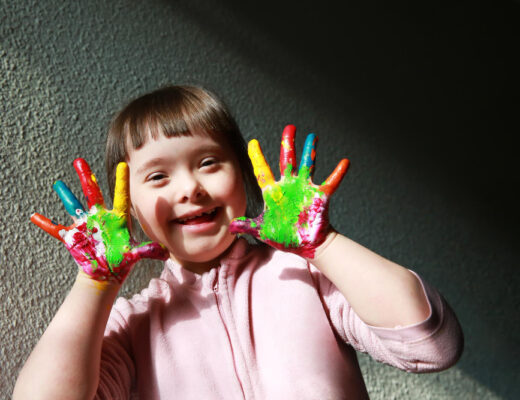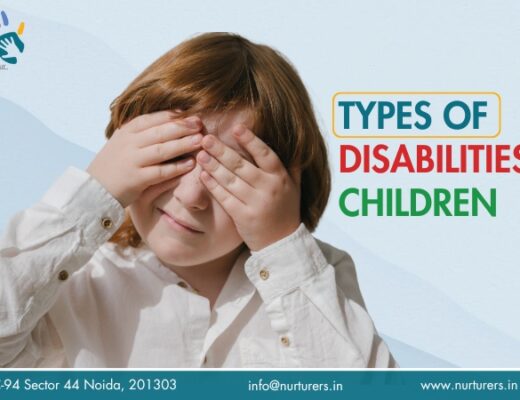For many parents, the moment they hear the word “autism” in relation to their child, life changes. It sparks a mix of confusion, fear, and questions—perhaps none more pressing than:Can autism be cured? This article is designed to answer that question thoughtfully, accurately, and with empathy. We’ll explore the latest science, the importance of early diagnosis, the power of therapy, and the real-life potential for children diagnosed with autism to thrive.
What is Autism?
Autism Spectrum Disorder (ASD) is a neurological and developmental condition that affects how a person communicates, interacts with others, and processes information. The term “spectrum” is crucial—it means that autism can look very different from one individual to another. Some children with autism may speak fluently but struggle socially, while others may be nonverbal with strong sensory sensitivities. Autism is not a disease, and it is not something to be “fixed.” It is a unique neurological wiring that influences how a person experiences the world.
Common signs and characteristics include:
- Delayed speech or language development
- Difficulty with eye contact, facial expressions, or social interactions
- Repetitive behaviors such as rocking, spinning, or hand-flapping
- Strong resistance to changes in routine
- Deep interest or focus on specific topics or objects
- Over- or under-sensitivity to lights, sounds, or textures
Recognizing what autism is? helps us move away from the idea of “curing” it and toward supporting a child’s development in ways that honor their unique abilities.
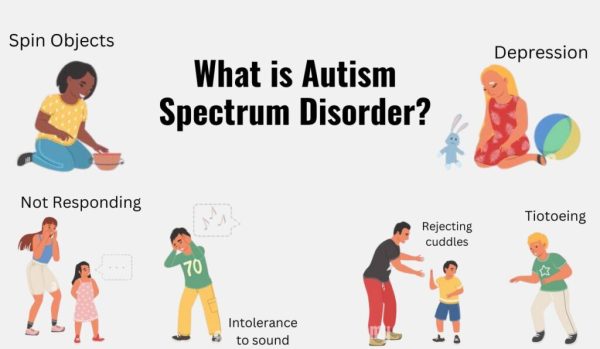
Curing Autism: Facts vs. Myths
Autism, or Autism Spectrum Disorder (ASD), is a lifelong neurodevelopmental condition that affects how a person communicates, interacts, and experiences the world. One of the most common questions surrounding autism is whether it can be cured. The short answer is no — autism cannot be cured, but that doesn’t mean individuals with autism cannot live happy, fulfilling lives.
✅ Key Facts:
- Autism is not a disease; it’s a difference in brain development and functioning.
- It is a spectrum condition, meaning it affects people in many different ways and to varying degrees.
- With the right support — such as speech therapy, behavioral therapy, and occupational therapy — individuals with autism can build important life skills and become more independent.
- Early intervention often helps children improve communication, social interaction, and learning.
While there’s no cure, ongoing support and accommodations can make a significant positive impact. It’s important to focus on helping each individual reach their full potential rather than trying to “fix” or “cure” them.
❌ Common Myths:
- “Autism can be cured with medicine or special diets.”
→ No scientific evidence supports this. Medications may help manage certain symptoms (like anxiety), but they do not cure autism. - “Children can grow out of autism.”
→ Autism is a lifelong condition. People may develop better coping strategies over time, but they are still autistic.
“Vaccines cause autism.”
→ This is a widely debunked myth. Numerous scientific studies confirm there is no link between vaccines and autism.
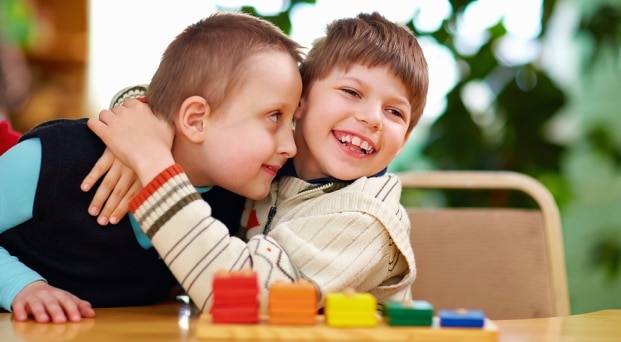
Can Autism Be Cured?
The question of Can autism be cured? has been widely debated and often misunderstood. Simply put, autism cannot be cured—because it is not an illness. It is a lifelong neurological condition. However, with the right support and early interventions, many individuals with autism can lead independent, fulfilling lives, develop strong social skills, and contribute meaningfully to their communities.
While there is no medical or pharmaceutical cure for autism, early therapy and intervention can help children develop the skills they need to function effectively. Just like a child who struggles with reading may benefit from extra help, a child with autism benefits from targeted therapies that help them learn communication, behavior regulation, and social interaction.
What effective support looks like:
- Building daily living skills and independence
- Supporting emotional regulation and behavior
- Teaching communication and language development
- Enhancing social awareness and interaction
- Creating structured environments that support growth
Rather than focusing on a “cure,” the goal should be maximizing the child’s potential and equipping them with the tools to live a successful life on their own terms.
Can Virtual Autism Be Cured?
In today’s digital age, a growing number of young children are spending excessive amounts of time in front of screens—from tablets and phones to TVs and gaming consoles. This has led to the term “virtual autism,” which describes children showing autism-like symptoms due to a lack of real-life interaction and overexposure to screens in early developmental years.
The good news? When screen time is drastically reduced and replaced with active play, face-to-face communication, and outdoor exploration, many of these children show significant developmental recovery. In this case, the symptoms are environmental rather than neurological.
Signs of virtual autism:
- Delayed speech despite good hearing
- Avoiding eye contact
- No interest in other children or adults
- Hyperactivity and attention issues
Can virtual autism be cured? Yes—if identified early and addressed through lifestyle changes, children often regain lost developmental milestones within months. However, it’s critical to understand that this is not the same as autism spectrum disorder, which is a neurological difference and not caused by screen exposure.
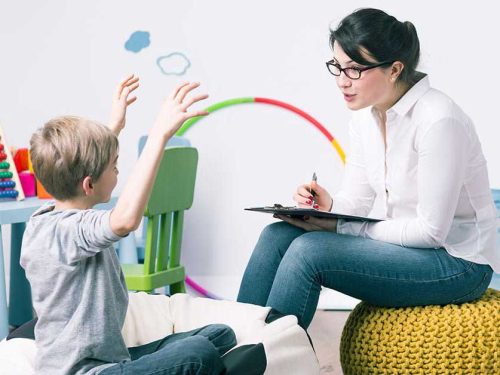
Can Autism Be Caught Early?
Yes. Autism can often be identified between 12 and 24 months, sometimes even earlier. The earlier the signs are recognized, the sooner intervention can begin—which significantly improves outcomes. Most pediatricians now screen for autism at 18 and 24-month wellness visits using simple questionnaires and developmental checklists.
Key early indicators include:
- Not responding to their name by 12 months
- No pointing, waving, or showing by 12–15 months
- No single words by 16 months or two-word phrases by 24 months
- Limited eye contact or facial expressions
- Difficulty engaging in pretend play
Recognizing signs early gives your child the best possible chance to access early developmental support, which can help them learn to communicate, play, and interact more effectively with others.
Early Signs Your Child Might Have Autism
It’s important to understand that every child develops at their own pace, but if you observe several of the following signs consistently, it’s wise to speak with your pediatrician or a developmental specialist.
Potential signs of autism include:
- Not making eye contact or showing facial expressions
- Limited use of gestures (pointing, waving, nodding)
- Repetitive body movements like hand flapping or spinning
- Strong attachment to specific routines or objects
- Unusual reactions to sound, smell, or texture
- Preferring to play alone or not showing interest in peers
- Regression in speech or social behaviors after initial development
These signs do not automatically mean your child has autism, but they are reasons to explore further assessment.

Benefits of Early Intervention for Autism
The sooner a child receives support after diagnosis, the more positive the impact. Early intervention uses therapies to build foundational skills during the most crucial period of brain development (birth to age 5). This is when the brain is most adaptable and ready to learn.
Benefits of early autism therapy:
- Enhances language, cognitive, and social development
- Reduces the intensity of behavioral challenges
- Increases emotional regulation and coping mechanisms
- Improves school readiness and long-term academic success
- Empowers parents to support their child more effectively
Numerous studies have shown that children who begin therapy early (especially before age 3) show greater improvements in IQ, adaptive behavior, and communication.

Therapy for Early Autism in Children
Therapy is at the heart of autism support. There’s no single treatment that works for every child, but most children benefit from a multi-disciplinary approach that includes behavioral, occupational, and speech therapies.
Key therapies include:
- Occupational Therapy for Autism
Focuses on helping children perform daily tasks and manage sensory challenges. Therapists work on motor skills, self-care (like brushing teeth or dressing), attention span, and play skills. - Speech Language Therapy for Autism
This is essential for children who have delayed or absent speech. It also helps with understanding language, forming sentences, using gestures or assistive devices, and developing non-verbal communication skills. - ABA (Applied Behavior Analysis)
ABA is a data-driven, reward-based approach that breaks down complex behaviors into small, teachable steps. It is highly customizable and often offered in structured environments like autism therapy centres. - Social Skills Groups
These help children practice and improve their interaction with others in a guided setting. - Family and Parent Training
Teaches families how to reinforce skills at home, manage behavior, and create supportive routines.
Looking for support? Many families search for autism therapy centres near me to find professionals who can assess their child and start a tailored plan. Local centers often offer a mix of therapy types under one roof.

What To Do If Your Child is Diagnosed With Autism?
Getting a diagnosis can be emotional and overwhelming, but it’s also a gateway to help and hope. Here’s what you can do next:
Step-by-step guidance:
- Accept the diagnosis as a starting point for support, not a label for limitation.
- Seek therapy early—contact certified therapists or search for autism therapy centres near me for immediate assessment.
- Stay informed by learning about autism, therapy options, and parenting strategies.
- Create a supportive routine at home with structure, visuals, and consistent expectations.
- Involve your child’s school to build an Individualized Education Plan (IEP).
- Connect with support groups to share your journey and gain strength from others.
- Celebrate progress—every small win is a huge leap.
Conclusion
To answer the question once more: Can autism be cured? No. But it can be understood, supported, and nurtured. Children with autism are not broken—they just need to be met where they are. With early diagnosis, dedicated autism therapy, and consistent support, they can reach milestones once thought impossible.
Whether you’re exploring occupational therapy for autism, considering speech language therapy for autism, or searching online for autism therapy centres near me, the most powerful step you can take is to start early.
At Nurturers, we believe every child has the potential to thrive—and we’re here to walk that path with you.

